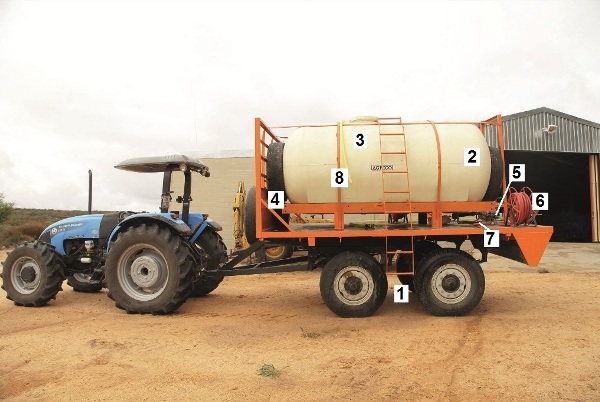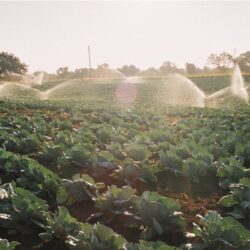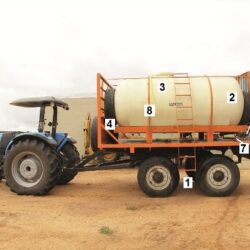THIS FIRE TRUCK DOESN’T PLAY WITH FIRE
With a little skill and welding an old trailer was turned into one of the most important pieces of equipment on any farm – a fire trailer.
If there’s one thing that you don’t take shortcuts with, it’s safeguarding your farm against fire, says Mr. Paul Schlechter, farm manager of Klipopmekaar, a rooibos tea farm in the Cederberg, South Africa.
“A fire on the farm is one of our biggest nightmares because of the amount of old lands and dry material on the lands. In February 2010 we lost thousands of hectares of fynbos (veld) to a fire started by lightning. Luckily, we didn’t have any damage to our rooibos lands. And in February 2013 a fire broke out around Heuningvlei, destroying thousands of hectares in the northern parts of the Cederberg. It spread over the Pakhuis Pass and was eventually stopped at the western border of our farm,” he says.
After this, Paul converted an old 8 tonne farm trailer into a fire truck that can hold up to 6 000 litres. About 2, 5 m of the old 8 tonne trailer was cut off so that it would be just long enough for the water tank to fit onto it. The trailer is now about 4 m long.
He took the swivel plate off and welded it onto the chassis so that it doesn’t move around. “The trailer is now like a calf, a small trailer hitched to the back of a big trailer and unable to move or swing,” he explains.
THIS IS HOW HE DID IT
Photo 1: Because the wagon doesn’t have hinges, the axles need to be as close together as possible so the spaces between the wheels aren’t more than 50 cm. Therefore the back wheels of the wagon were left as is, but the front axle of the part that was removed, was moved so that the distance between the axles is only 50 cm. The wheels need to be big enough to carry the weight of the trailer when filled with water. This trailer had 1 100 x 20 wheels on it.

Photo 2: An old tank of 6 000 litres for liquid fertiliser that Paul bought off a neighbour, was used as water tank. The tank originally came with a framework which Paul welded onto the trailer. The tank weighs about 6 tonnes when full.

Photo 3: The tank has a meter which indicates how much water it holds. The tank is fitted with partitions inside that ensures the liquid inside doesn’t swirl around too much, as 6 000 litres is very heavy and could cause a wagon to topple. Paul ensures it always carries about 3 000 litres, in case of an emergency.

Photo 4: Old tyres are applied as shock absorbers at the front and the back of the tank.

Photo 5: A two phase pump with a petrol engine of about 5 kW is used to pump water to and from the tank. The engine pumps water through the fire hoses to put the fire out. The water can be topped up through an opening at the top of the tank, but another pipe is attached to the same engine to use pump water from a dam or river into the tank. It doesn’t really matter where on the wagon the engine is attached, but Paul prefers his at the back of the truck.

Photo 6: There are two fire hoses on the truck for extinguishing the fire. The one is at the opposite corner of where the pump is situated and the second one is on the other side, in the middle of the truck.

Photo 7: Taps that can be opened and closed are installed on all the water hoses.

Photo 8: An additional pipe is added so that water can also be pumped from the fire truck to, for example, other fire extinguishing vehicles. It helps to save fuel and money, seeing that other vehicles don’t have to travel back to the dam or water source to refill.

What you’ll need to build it
– A fertiliser tank
– An engine
– Wagon or trailer and old tyres
– Manpower
– Fire extinguisher sets
– Taps, clamps and pipes




